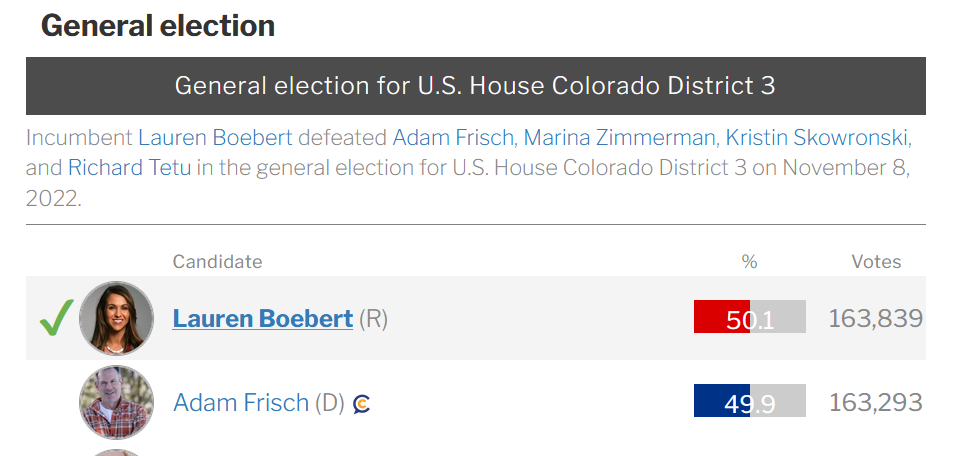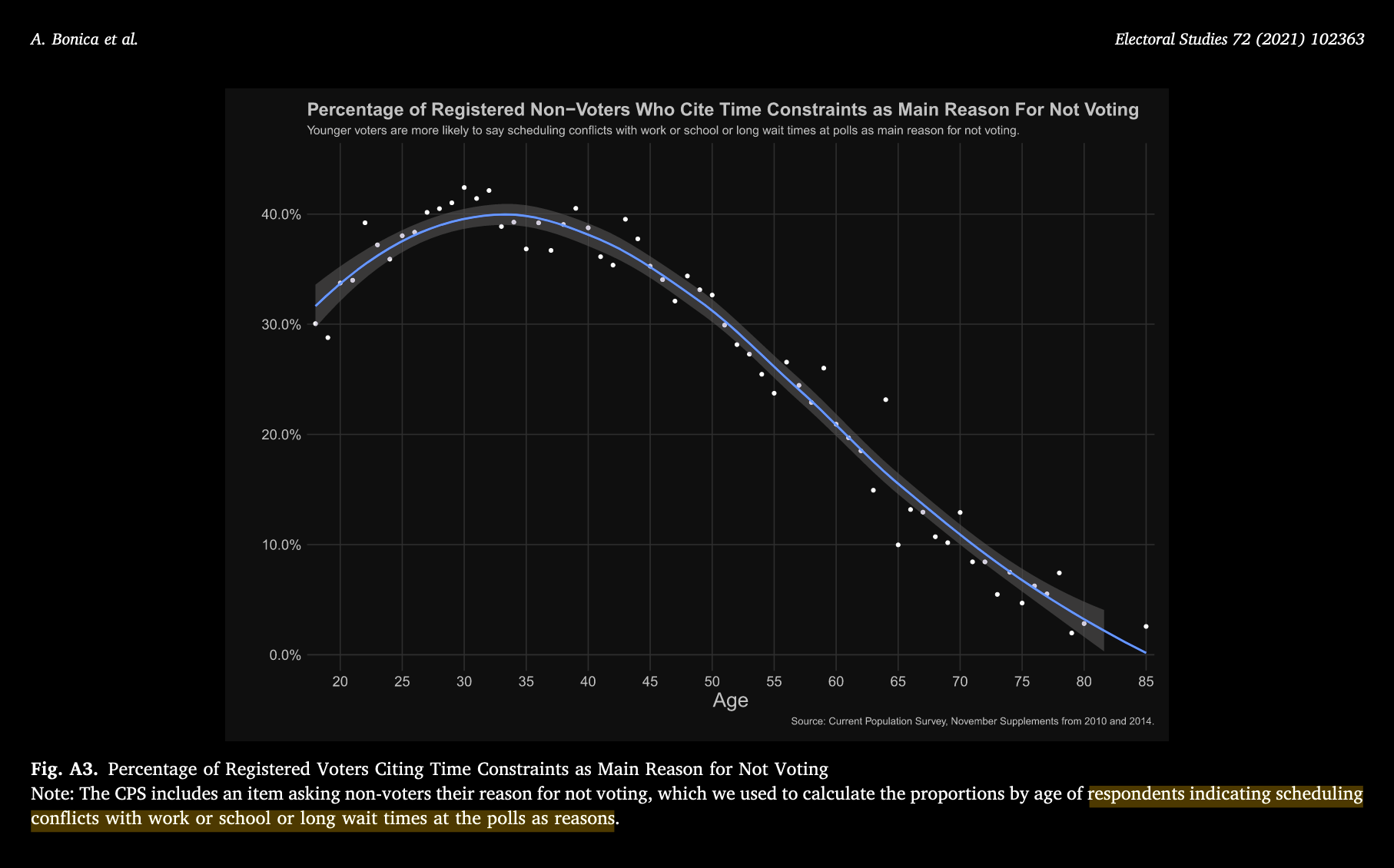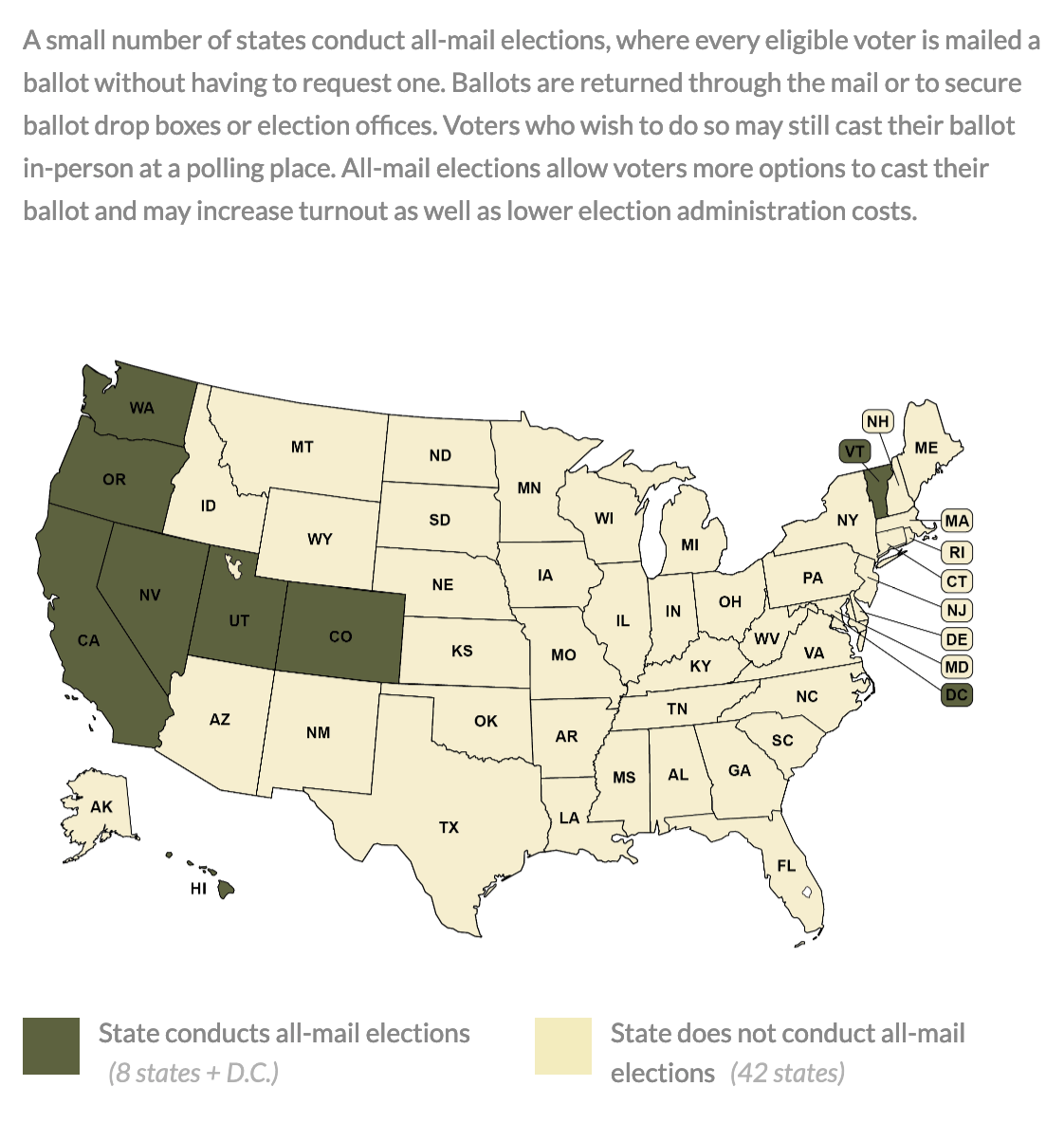One interesting election I've thought about since 2022 is U.S. House Colorado District 3, where Lauren Boebert—whose primary campaign promise was that she would carry a gun on the house floor—won by a mere 546 votes:

With such a consequential election decided by about the same number of people who fit into a large theater, it's no wonder a 2021 paper in the Electoral Studies journal caught my eye. Most notable in their findings was that when all voters were mailed a ballot beforehand and given an opportunity to vote by mail, turnout among voters between 18-30 years old increased by about 10%.
How All Mail Voting (AMV) works
Colorado’s AMV policy centers around proactively mailing ballots to all registered voters, rather than requiring voters to request an absentee ballot before the election. Any voter who registers at least eight days before the election receives a ballot by mail. Voters may choose to mail back their completed ballot, drop it in one of many secure collection boxes, or bring it to a vote center, where professional staff serve those who prefer to vote in person (p. 103)
My highlights from the paper
- "All mail-voting in Colorado increased voter turnout by about 8 percentage points overall." Then, in an associated footnote: "By percentage point, we refer to the simple difference in turnout rate. Alternatively, this amount could be expressed in percentage growth of the electorate, in which all-mail voting expanded the Colorado electorate by about 11 percent."
- "According to the Colorado Population Survey (CPS), non-voters under the age of 40 are disproportionately likely to cite time constraints as a reason for not voting, with 38 percent of younger non-voters citing time constraints, compared with just 7 percent of those 65 and older."
The last page of the paper contains what I think is the most interesting takeaway: 30-40% of registered non-voters cited time constraints as the main reason for not voting. That's an enormous portion of the electorate!
I covered this paper in a TikTok video here, and below is the last page highlighting this takeaway:

Fortunately, all-mail elections is popular among a growing number of states—but unfortunately, that number is 8 (along with D.C.):

Notable takeaways:
- 19% of voting-eligible population lives in states that conduct all-mail elections
- 81% of voting-eligible population lives in states that do not conduct all-mail elections
If you'd like to continue this deep dive, head to the United States Election Project. They have a lot of information about electorate data like this.